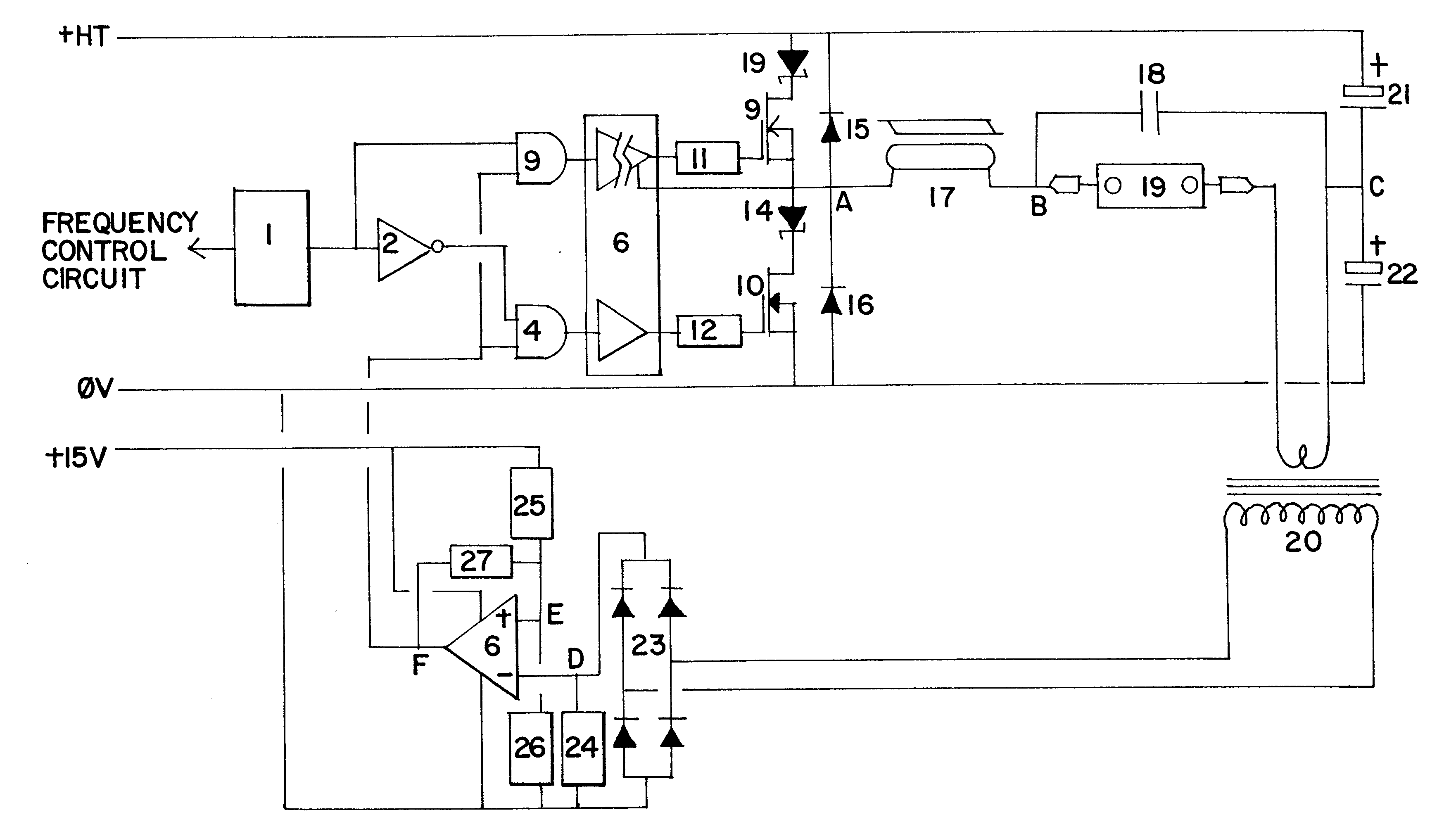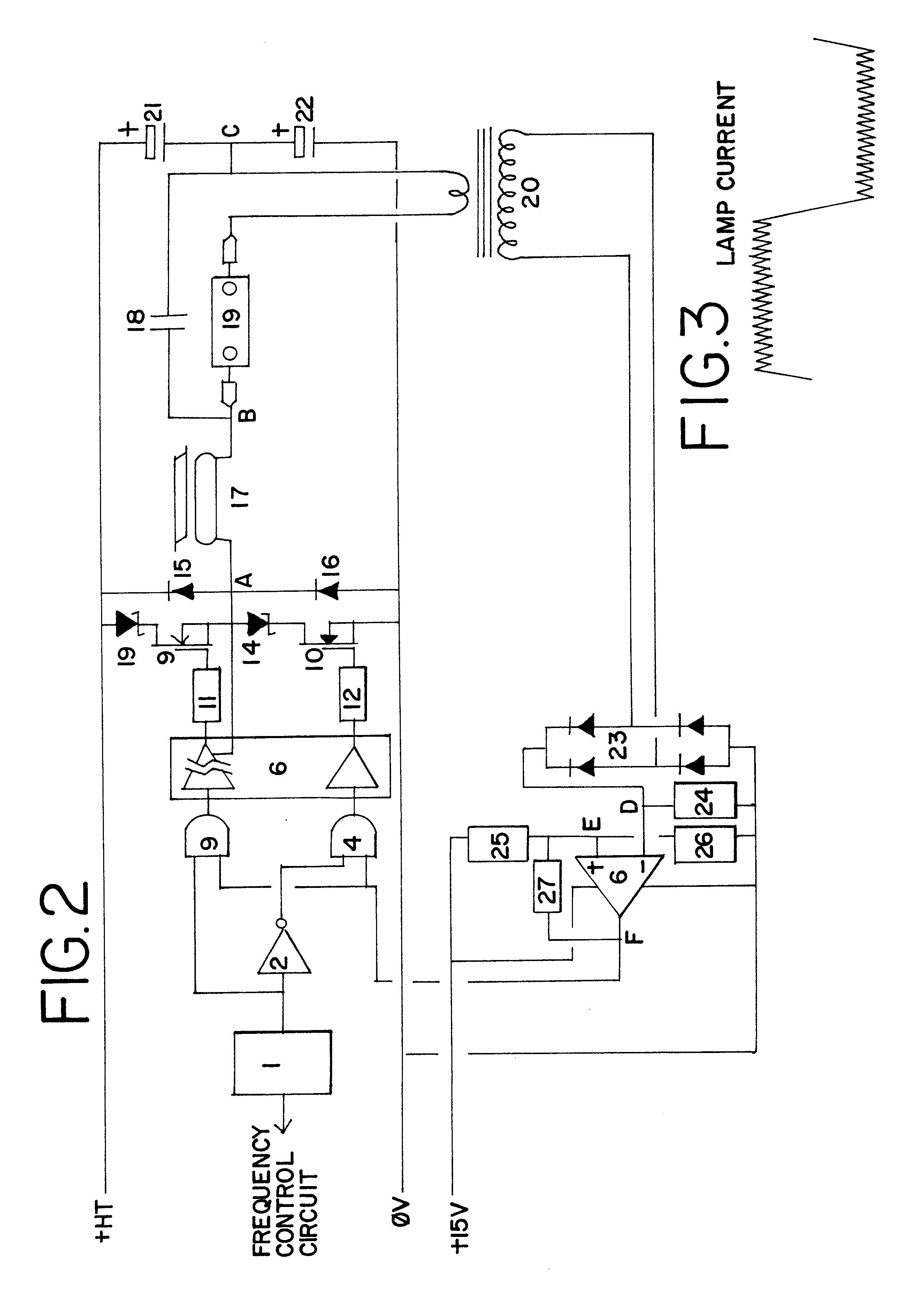High intensity discharge lamp ballast
a high-intensity discharge and lamp ballast technology, applied in the direction of sustainable buildings, efficient power electronics conversion, electric variable regulation, etc., can solve the problems of catastrophic failure of the arc tube, limiting the practical length of the wiring between the igniter circuit and the lamp, alarming and dangerous problems
- Summary
- Abstract
- Description
- Claims
- Application Information
AI Technical Summary
Benefits of technology
Problems solved by technology
Method used
Image
Examples
Embodiment Construction
FIG. 2 shows a first embodiment of the invention in which the operation of the circuit is characterised by two discrete modes.
A frequency control circuit (not shown) controls the output frequency of oscillator 1, which outputs a square wave. The output of the oscillator 1 is split, one half being passed through an inverter 2, to create two complementary outputs in anti-phase with each other. These anti-phase outputs are connected to the inputs of two dual input AND gates 3 and 4, the other inputs of the two AND gates being connected to the output of a voltage comparator 5. The outputs of the two AND gates 3, 4 are connected to a MOS gate driver IC 6, which drives a pair of MOSFETs 9, 10 via gate drive resistors 11, 12. The MOS gate driver IC 6 is provided with means of isolation which allows the gate of the "high side" MOSFET 9 to be driven at a voltage referenced to the source connection of the MOSFET. Each MOSFET 9, 10 is provided with a series connected Schottky diode 13, 14 and ...
PUM
 Login to View More
Login to View More Abstract
Description
Claims
Application Information
 Login to View More
Login to View More - R&D
- Intellectual Property
- Life Sciences
- Materials
- Tech Scout
- Unparalleled Data Quality
- Higher Quality Content
- 60% Fewer Hallucinations
Browse by: Latest US Patents, China's latest patents, Technical Efficacy Thesaurus, Application Domain, Technology Topic, Popular Technical Reports.
© 2025 PatSnap. All rights reserved.Legal|Privacy policy|Modern Slavery Act Transparency Statement|Sitemap|About US| Contact US: help@patsnap.com



